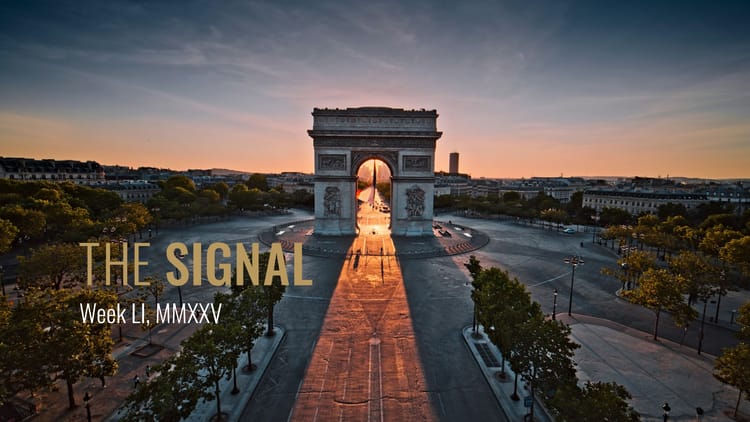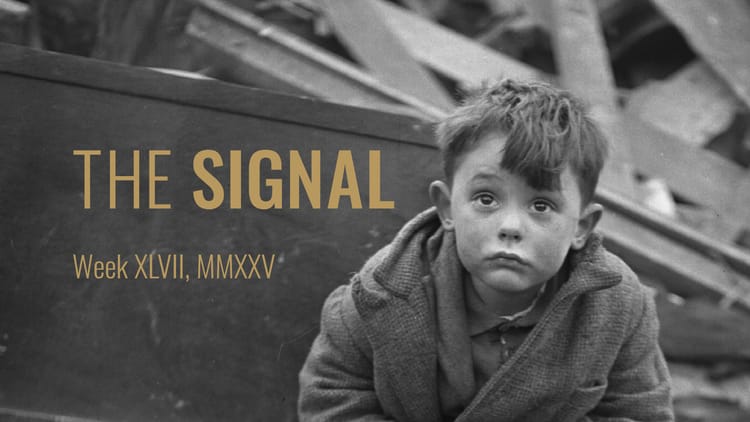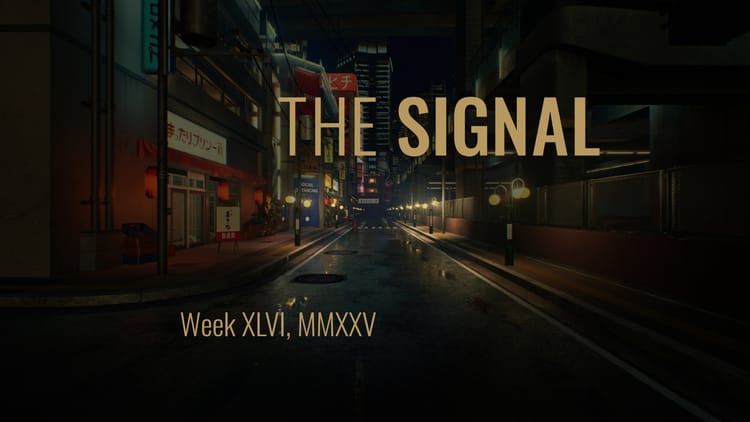Venezuelan roulette
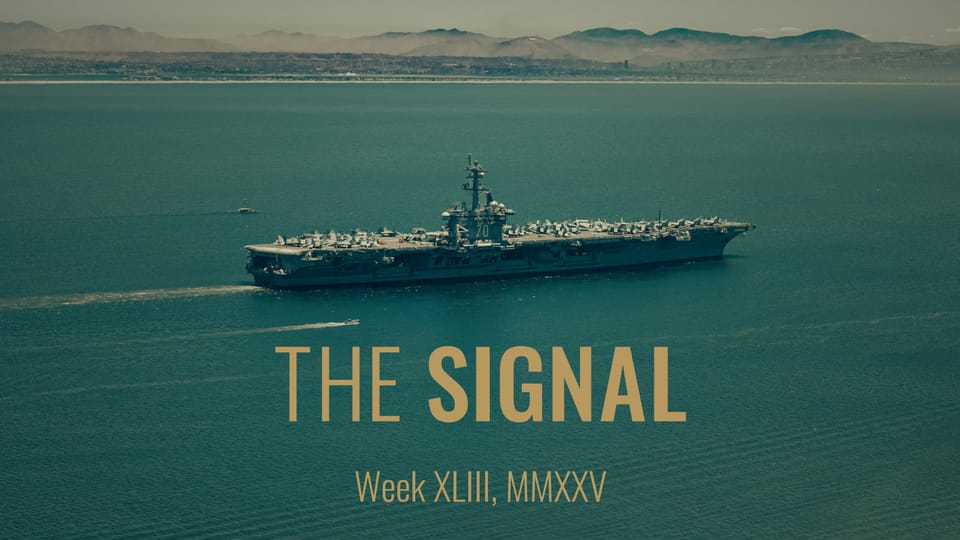
This week
- What are 10,000 U.S. troops and Tomahawk-capable submarines doing off the South American coast?
- Is Donald Trump really deconstructing democracy in the United States? Steve Hanson on the American consolidation of patrimonial rule.
- The Kremlin and Syria’s Islamist rulers were at war for years. Why are they working together now? Vali Nasr on a swift and unexpected transformation of power in the Middle East.
Weather report
- Tropical Storm Melissa stalks the Caribbean
+ Cultural intelligence
- Why is China building so much, so fast? Dan Wang’s new book, Breakneck: China’s Quest to Engineer the Future.
- What’s raptor house?
- & The week in new music

Developments
What’s happening? October 18-24.
Ghosts of Panama
Since early September, American military forces have killed at least 32 people in eight strikes on boats in Caribbean and, now, Pacific waters. U.S. Defense Secretary Pete Hegseth calls the dead drug smugglers operating along “known narco-trafficking transit routes,” emphasizing the government of Venezuela’s complicity with them.
To date, the administration has offered no evidence to back its claims—no cargo manifests, no photographed contraband, no crew identifications, no boarding documentation. Officials have announced each strike, cited intelligence assessments, and that’s more or less it. They’ve sent two survivors from one attack back to where they were from—Colombia and Ecuador—neither of which is Venezuela, both of which, notably, export more cocaine than Venezuela does.
On Tuesday, American forces destroyed another vessel—this one in the eastern Pacific, the first strike outside the Caribbean. But the pattern is now repeating: Destroy boats at sea, claim drug smuggling, move along.
The U.S. military infrastructure in the Caribbean has meanwhile been growing. Some 10,000 American troops now operate there—Marines, sailors, special operations forces. Eight warships are patrolling the waters off Venezuela, including guided-missile destroyers and a submarine capable of firing Tomahawk cruise missiles. There’s an F-35 squadron operating from Puerto Rico. B-1 and B-52 bombers fly up to Venezuela’s coast in what the Pentagon calls “bomber-attack demonstrations.” And on October 15, President Donald Trump confirmed that he authorized the Central Intelligence Agency to conduct covert operations inside Venezuela. On Wednesday, he told reporters the United States was “certainly looking at land now” for strikes—having gotten “the sea very well under control.”
What’s going on?
- A mismatch between tools and task. Traditional counternarcotics work meant Coast Guard vessels intercepting smugglers, boarding suspect boats, confiscating drugs, and bringing crew back for federal trial. That process generated documentation anyone could examine. So far, the current approach has produced only casualty figures. Perhaps more telling: the force composition. A submarine with Tomahawk missiles, bomber demonstrations, 10,000 troops—it’s all too much for interdicting drug boats, but still too little for invading Venezuela. The deployment appears to sit awkwardly between optimization for either of those two possible goals.
- What U.S. officials are saying privately versus publicly. Representatives of the American administration have told reporters the campaign aims at removing the Venezuelan dictator, Nicolás Maduro—a goal that goes back to Trump’s first term, when maximum-pressure sanctions and international isolation left Maduro in power. Some describe the current effort as psychological warfare meant to fracture Venezuela’s military. Yet publicly, Secretary of State Marco Rubio frames it as responding to terrorist threats, not regime change. The administration has meanwhile designated South American drug cartels as terrorists, says it’s in an “armed conflict” with them, and placed a $50 million bounty on Maduro. When asked if Thursday’s bomber flight was to pressure Venezuela, Trump said, “It’s false—but we’re not happy with Venezuela for a lot of reasons.”
- How Maduro reads the threat. The Venezuelan president has declared a state of emergency, militarized 20 of 23 states, positioned Russian air defenses at ports, and runs daily military exercises near the coast. Venezuelan jets fly provocatively close to American ships. His government created what planners call contested electromagnetic spectrum—Russian radar, Chinese relays—so American forces can’t assume they operate undetected. If Maduro believed this was about drug interdiction, he wouldn’t be preparing for strikes or invasion.
- Trump’s previous attempt. This isn’t his first effort to remove Maduro. During his first term, maximum-pressure sanctions deepened Venezuela’s economic collapse and triggered the largest migration exodus in the history of the Western Hemisphere. Maduro held power. The current tactics are different: military buildup, boat strikes, covert operations authorized by the CIA. So what’s the strategy?
- The Panama City half-precedent. The closest historical comparison is Panama in 1989, when the United States removed the dictator Manuel Noriega on drug-trafficking charges. Prosecutors had evidence. They eventually convicted him. The operation deployed 27,000 troops, lasted five days, and worked—because everything aligned. The current U.S. buildup in the Caribbean has none of that. No evidence supports the strikes. The force structure doesn’t fit with either interdiction or invasion. And the stated purpose keeps shifting—while the military presence keeps growing.
Whether this might be a sign of intent or contingency planning is still unclear—possibly even to officials running the operation. Last week, Southern Command Admiral Alvin Holsey, who oversees the Venezuela operations, announced his retirement after serving just one year of a three-year term; sources reported tensions with Hegseth over the legality of the recent strikes. The Pentagon won’t explain the departure. Whatever the reason, military buildups can create their own momentum. Capabilities create options. And options tempt decision makers.
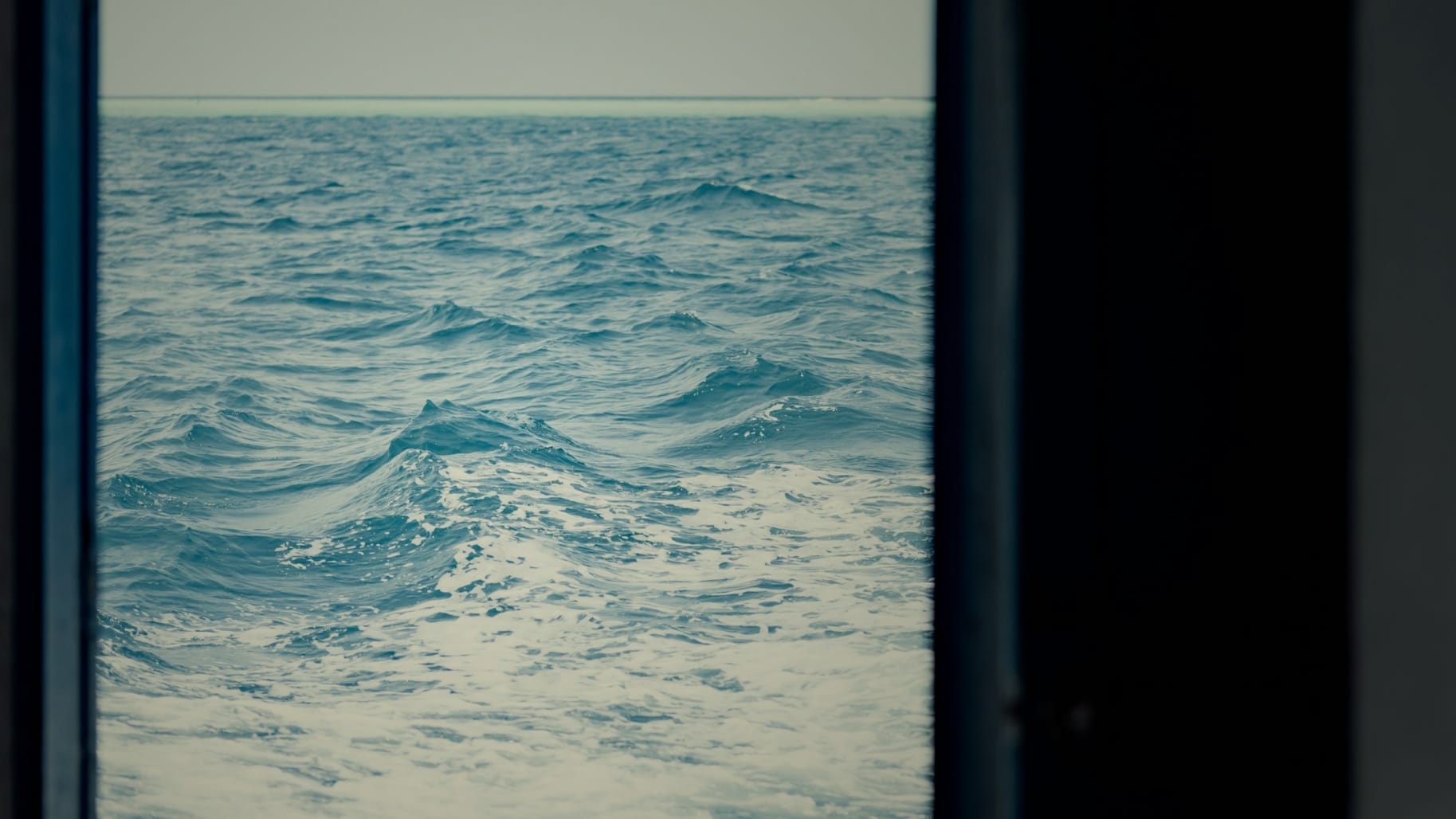
Meanwhile
- Seven minutes in Paris. The Sunday Louvre heist—four men, a furniture elevator, angle grinders, eight Napoleonic pieces worth €88 million—left behind a dropped crown and equipment. Paris police brought in CGI Group, the Israeli firm that cracked the 2019 Dresden burglary. … Stakes: What do the clues say about the thieves and their targets? … Since: Prosecutor Laure Beccuau put the recovery window at one week before the jewels are dismantled. The art detective Arthur Brand put it plainly: Too famous to sell intact. France’s Justice Minister Gérald Darmanin acknowledged what the furniture elevator in broad daylight had already suggested—“What’s certain is that we have failed.” The Louvre reopened on Tuesday. No arrests.
- ’No kitchen lady.’ The Afrikaner refugee program—7,000 slots from a 7,500 global ceiling, week-long processing that normally takes years—has resettled fewer than 400 people through September. The U.S. State Department booked 50 commercial seats in late September. Three people showed. One farmer who did arrive left Buffalo within days for work in South Dakota, noting that one of the biggest challenges for him in America was having to do his own housework. … Stakes: If people don’t want to come, what’s the program for?
- A pardon worth two billion. Changpeng Zhao—four months served, $50 million fine, $85 billion fortune kept—received his pardon on Wednesday. Binance has a $2 billion deal with World Liberty Financial using the Trump family crypto venture’s stablecoin, generating tens of millions annually for the families of World Liberty principals Donald Trump and Steve Witkoff. Zhao hired Trump-connected lawyers, including Ches McDowell, Donald Trump Jr.’s hunting companion, who was at the White House last week. … Stakes: How did Zhao go from U.S. federal prison to a presidential pardon in under a year?
- Thriving until the end. Fossils from northwestern New Mexico’s San Juan Basin challenge the theory that dinosaurs were already declining before the Chicxulub asteroid hit ultimately did them in. Researchers dated the site to within 340,000 years of the strike and found thriving ecosystems with Alamosaurus, Tyrannosaurus, and other dinosaurs living in regionally distinct communities—evidence that they were flourishing right until impact. The University of Edinburgh paleontologist Steve Brusatte: “One minute, a jet plane-sized dinosaur was shaking the ground as it walked, the next minute the whole Earth was shaking.”
- Climate whiplash. El Niño and La Niña—the opposing warm and cold phases of Pacific Ocean temperature swings—could hit a tipping point by mid-century, switching from irregular cycles to strong, rhythmic oscillations, according to research published this week in Nature Communications. High-resolution models show the tropical Pacific transitioning to larger sea surface temperature swings that synchronize with other climate patterns, amplifying rainfall extremes. Malte Stuecker of the University of Hawaii, the study’s lead author: “In a warmer world, the tropical Pacific can undergo a type of climate tipping point, switching from stable to unstable oscillatory behavior.” The potential result: intensified swings between flood and drought—across continents.
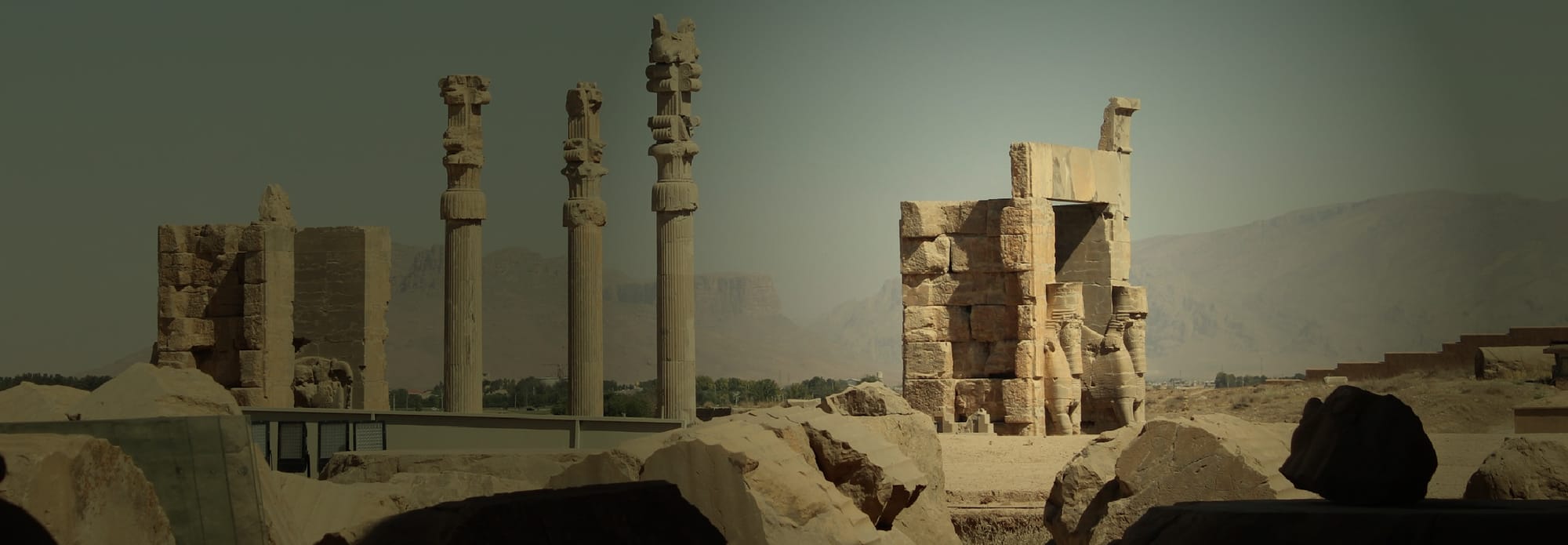
Features
Dive deeper
‘This time, he has the cadres’
Is Donald Trump really deconstructing democracy in the United States? Steve Hanson on the American consolidation of patrimonial rule.

